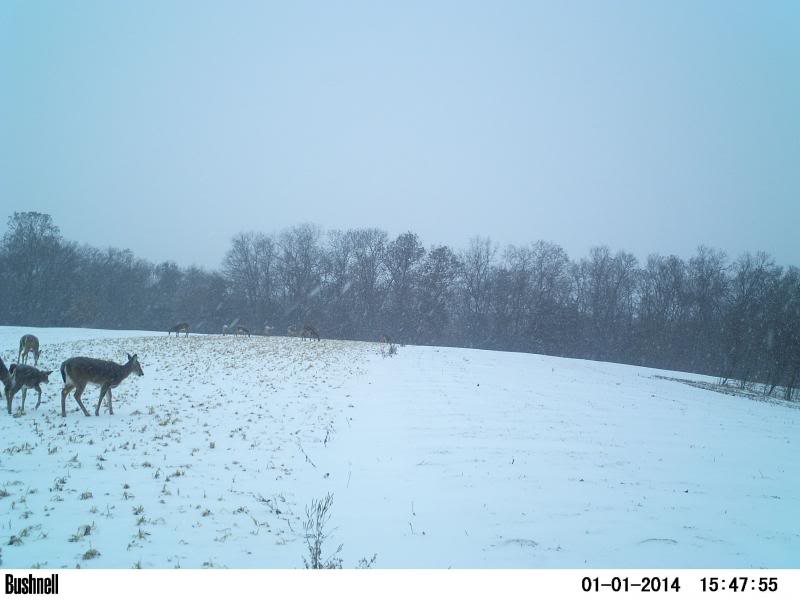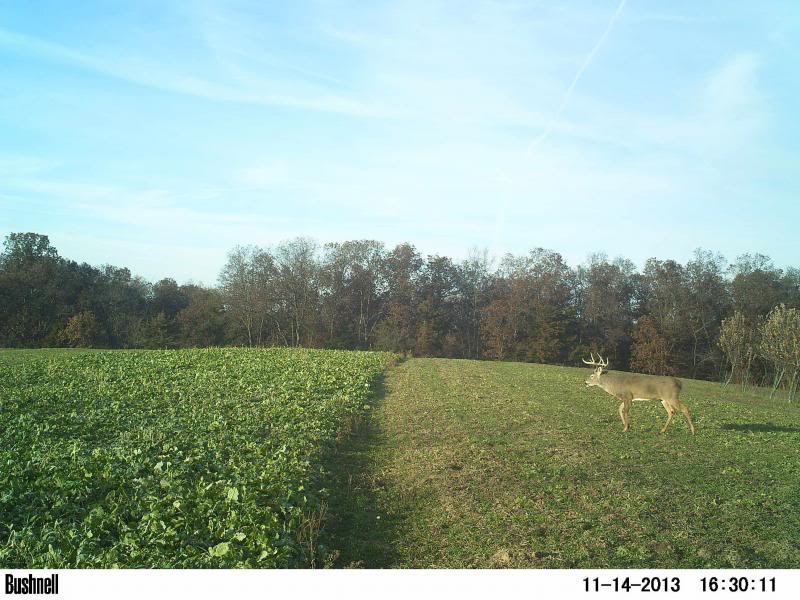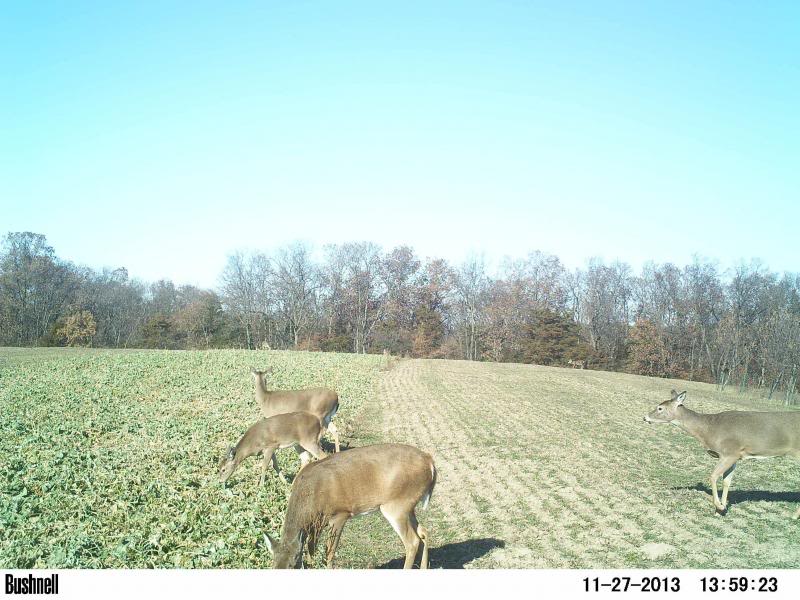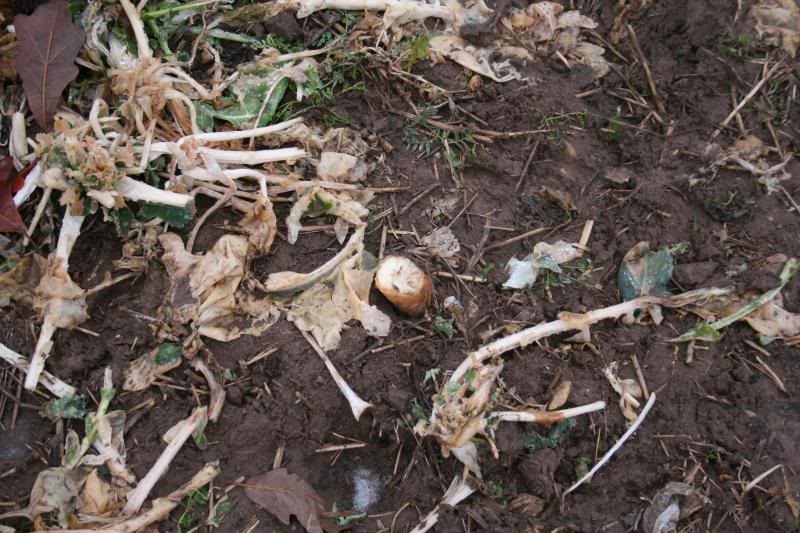Compete with complete habitat
I’ve mentioned from time to time that one of our landowners has a farm that borders Lee & Tiffany’s and in fact some of his farm is bordered on 3 sides by L&T. Lee and the landowner willingly share cam pics and information regarding managing for mature bucks, so they have a great relationship and of course friendly competition for bucks that know no boundaries.
Jesse and I make up Dbltree Habitat Enhancement Inc. and we build whitetail habitat for a living, making situations like this personally challenging. Our job is to create outstanding habitat in all cases and keeping our jobs often means attracting huge whitetails from Lee’s side of the fence to ours…no mean feat considering the landowner does not have unlimited financial resources and sponsors offering free seed and equipment.
For 2 years in a row the landowners family and friends have harvested 170+” mature bucks like this 6.5 year old …which got Lee’s attention

Lee was encouraging and happy but he and his cameraman grilled the landowner’s son “what is planted in your food plots??” Lee is an excellent deer manager but I have never known him to do any habitat work and the son replied honestly that he did not know …just some mixes that Jesse and Paul planted .

Obviously there are no secrets but what Lee does not realize is, it’s not about a “mix”…it’s about a combination of crops that provide year around food sources that adapt deer to coming to one place every day 365 days a year .

It’s about tree orchards dropping fruits of all kinds, irresistible chestnuts and low tannin sweet acorns that pique whitetails attention and cannot be found next door.

It’s about premium cover by using sound timber management, radical hinging and thick native warm season grass.

It’s about screening feeding areas and road and property lines so deer feel secure and safe from poachers.

Success is about habitat and whitetail management in tandem …it’s NOT about fancy buck a bag seed, or this crop or that.

Lee does none of the aforementioned things while in a concerted effort between landowner and DHEI, we do ALL of things and more.

Personally I’m honored that Lee wants to know what Jess and I are doing to attract mature bucks away from his place and anything we do…you can do also. Just remember brassicas, rye and clover are only one part of the habitat equation, if you want to compete with the big guns…make use of the full habitat arsenal.

Note that large numbers of deer come to this centralized feeding area daily and have been for 6 years now.

Lee typically has tenant farmers leave corn or beans standing, yet these deer ignore those crops.

Lee plants “bred for deer” seed but it’s clear that these deer could care less. Please note in no way are my comments meant to demean Lee, he’s a good hunter and knows how to manage for big whitetails.

This post is meant to share how many habitat improvements combined together make an unbeatable combination and they can be implemented by almost anyone and with some variations over much of nation…….
Plant ALL in one plot in strips or blocks
Alice, Kopu II, Durana (or comparable) white clover 10% of plot, sow at 6#'s per acre with the rye combination in the fall or in the spring with oats and berseem clover. Correct Ph and P&K with soil tests
Brassicas in 45% of plot
Purple Top Turnips 2.5#
Dwarf Essex Rape 2.5#
GroundHog Forage radish 5#
Plant in mid to late July in most Midwest states, or 60-90 days before your first killing frost, Use 200#'s of 46-0-0 urea and 400#'s of 6-28-28 per acre. Follow the dead brassicas with oats and berseem or crimson clover in mid spring at 50#'s oats and 12-15#'s berseem clover an/or same of crimson clover and/or 50#'s of chickling vetch)
Cereal Grain combo in 45% of plot...I use 50# each rye, oats and peas along with radish and clover seed all plant in half of each feeding area
We use 50#'s each of the following:
Winter rye 50-80#'s per acre (56#'s = a bushel)
Spring oats 50-120#'s per acre (32#'s = a bushel)
Frostmaster Winter Peas or 4010/6040 Forage peas 20-80#'s per acre
Red Clover 8-12#'s per acre or white clover at 6#'s per acre (or 20-40 pounds hairy vetch and 20-30#'s crimson clover on sandy soils)
Groundhog Forage Radish 5#'s per acre
Plant in late August to early September, if following well fertilized brassicas use 100 - 200#'s of urea, if starting a new plot add 400#'s of 6-28-28 but for best results soil test and add only what is necessary.
Rotate the brassicas and rye combo each year































